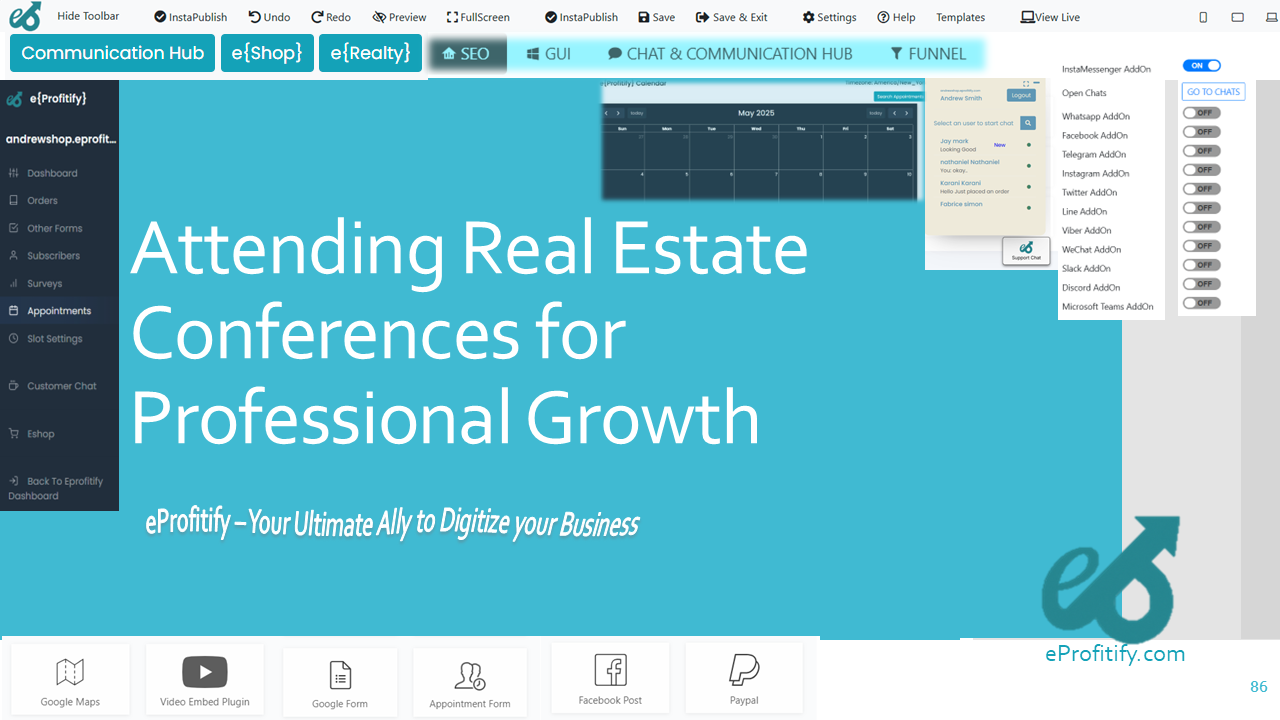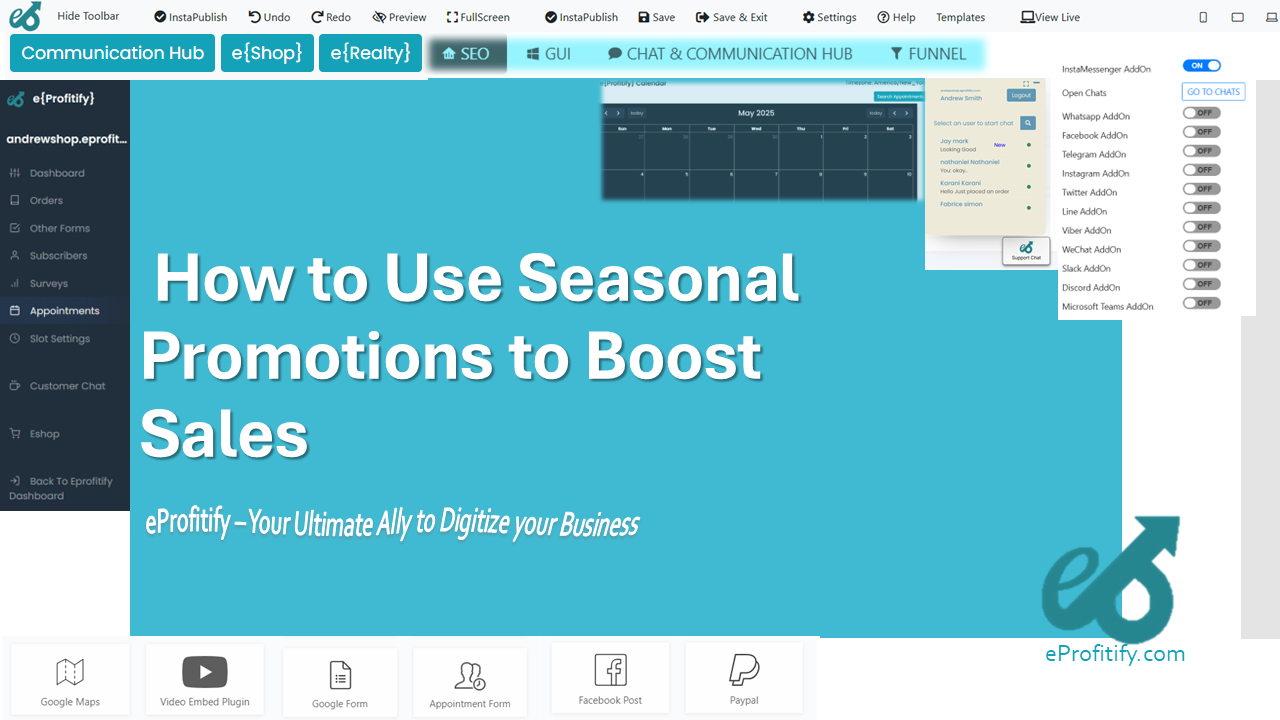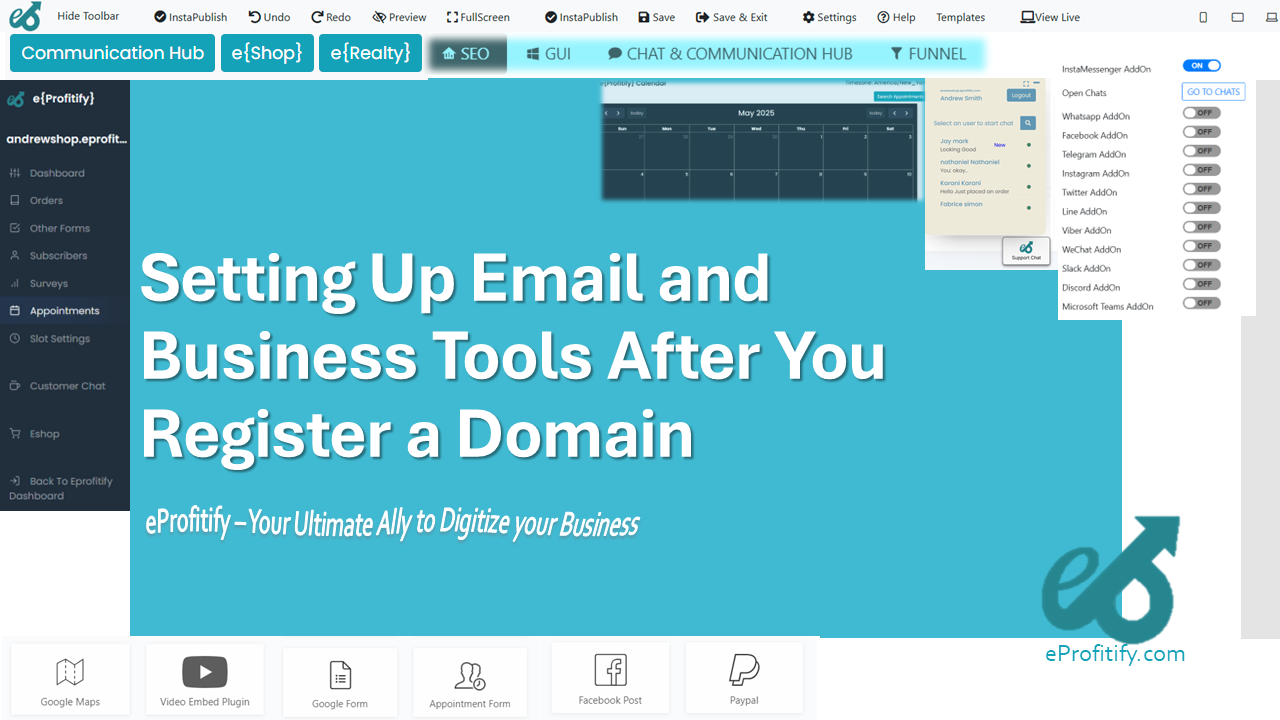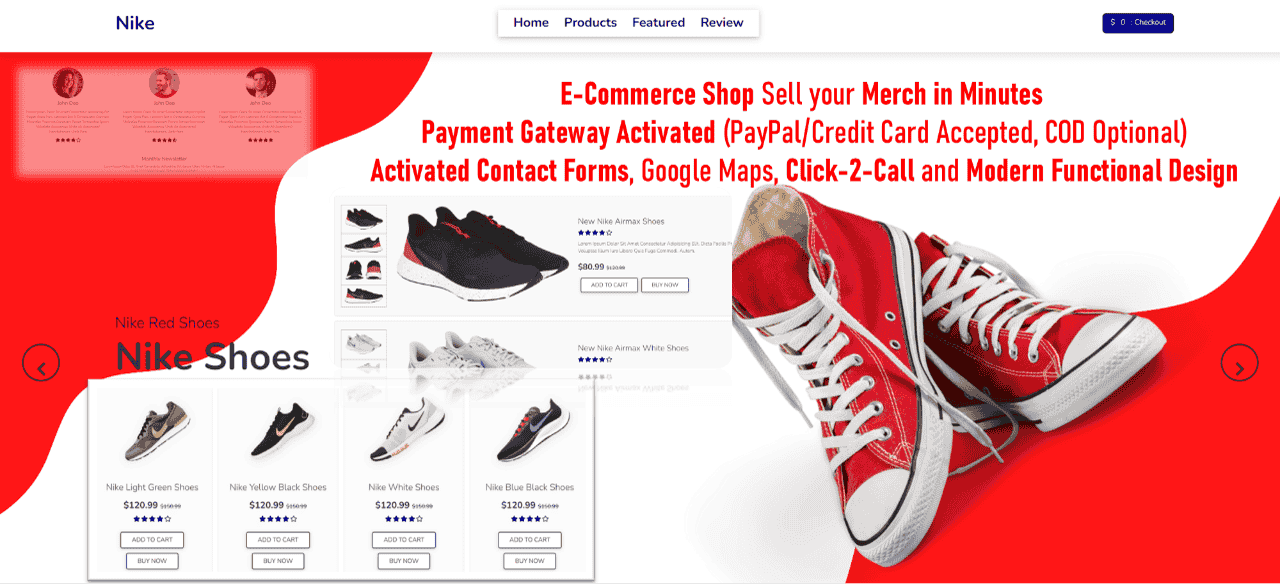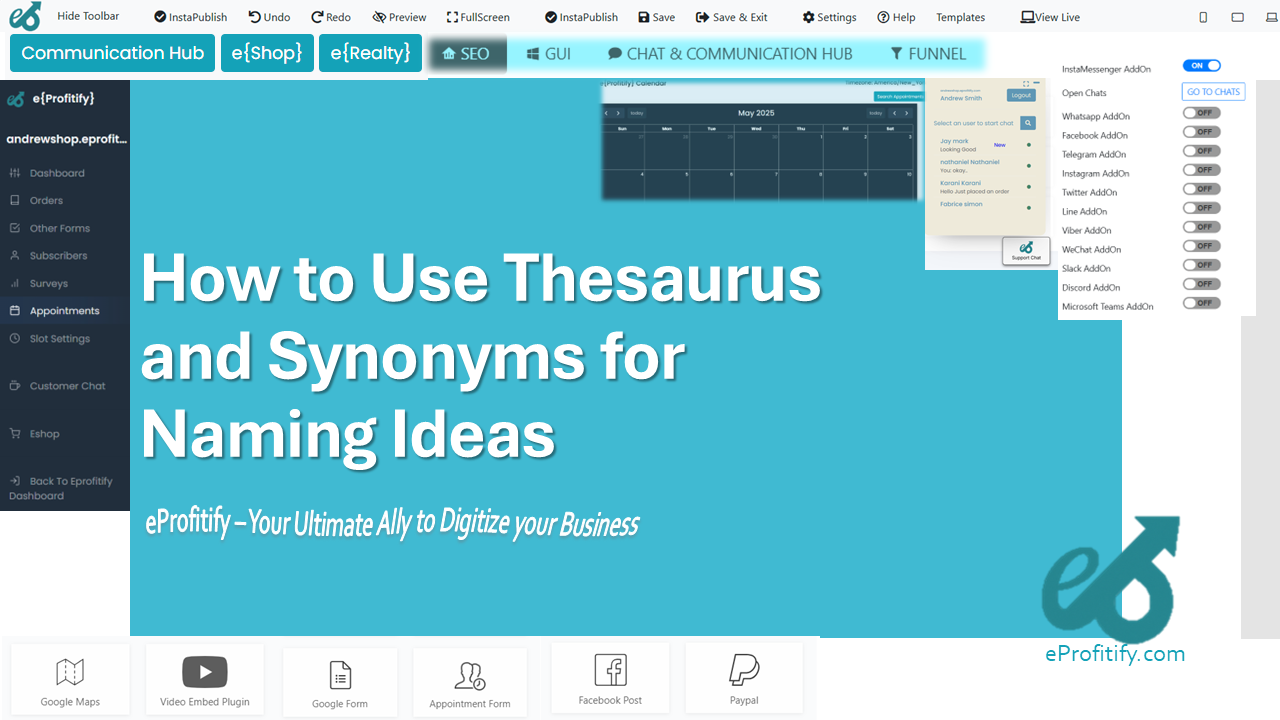How to Use Competitive Research to Choose a Name
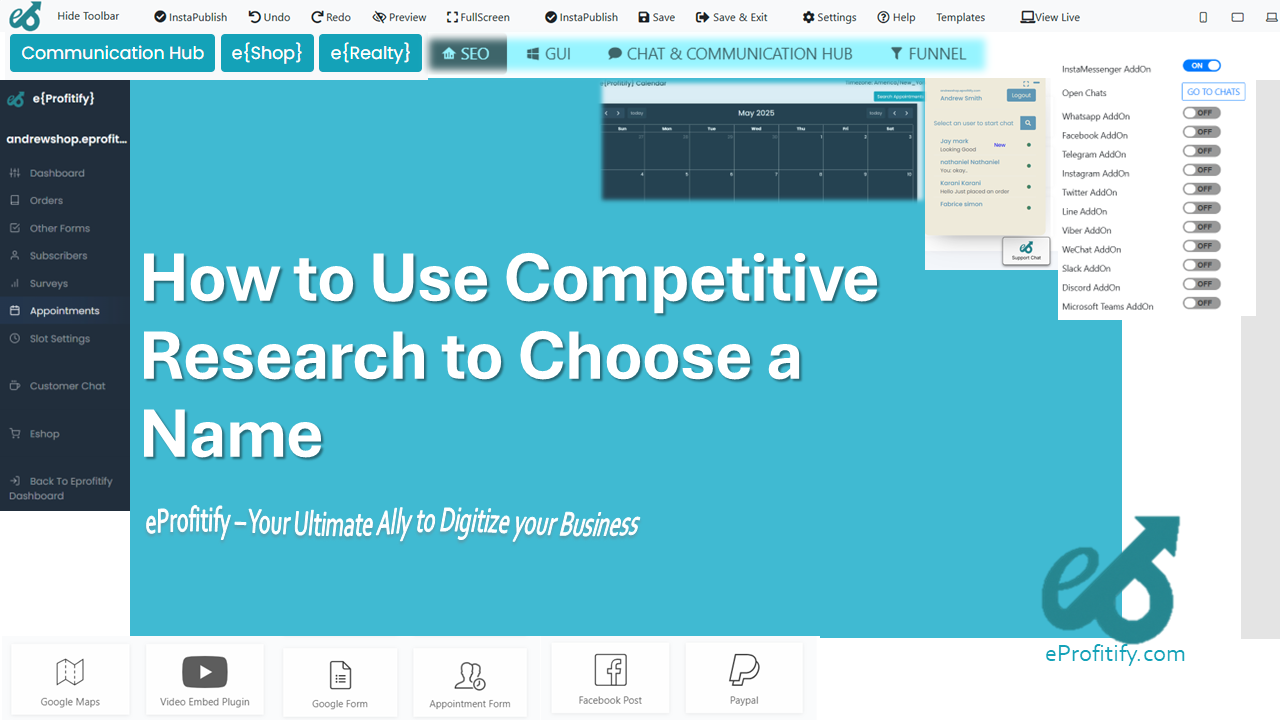
Schedule a LIVE Zoom call with an eProfitify Expert.
How to Use Competitive Research to Choose a Business Name
A well-chosen business name is a cornerstone of brand identity, influencing customer perception, SEO performance, and market differentiation. According to a 2022 Shopify survey, 77% of consumers base purchasing decisions on brand names, underscoring the importance of strategic naming. Competitive research offers a data-driven approach to selecting a name that resonates with audiences while standing out in crowded markets. Below is a step-by-step guide to leveraging competitive analysis for naming success, supported by industry statistics, and insights into how Eprofitify—a leading website management platform—facilitates post-naming business growth.
1. Map the Competitive Landscape
Begin by identifying direct and indirect competitors. Tools like SEMrush or Google Analytics reveal market leaders, while social media and industry reports highlight emerging players. Analyze at least 10–15 competitors to identify naming patterns and gaps.
Statistic: A 2023 Brandroot survey found that 63% of startups conduct competitive analysis before finalizing names, as it reduces renaming costs (averaging $30,000 for small businesses, per Entrepreneur).
2. Analyze Competitors’ Naming Strategies
Evaluate competitors’ names for:
- Length: Short names (under 10 characters) have 33% higher recall rates (Nielsen).
- Keywords: Industry-specific terms (e.g., “Cloud” for tech) boost SEO but risk genericness.
- Tone: 62% of top brands use evocative names (e.g., “Apple”) over descriptive ones (Cone Communications).
Example: Beverage giants like Coca-Cola and Pepsi use rhythmic, alliterative names, a trend replicated by startups like Bubblr.
3. Identify Trends and Gaps
Track linguistic trends; suffixes like “-ify” (Spotify) or “-ly” (Swiftly) signal innovation. Blend this with uniqueness—72% of successful names are coined words (Namewise). Avoid overcrowded trends; floral or tech terms like “Bloom” or “Byte” saw 40% saturation in 2023 (NameCrowd).
Statistic: Startups with unique names see 50% faster market penetration (Harvard Business Review).
4. Ensure Digital Viability
Check domain availability via platforms like GoDaddy. Exact-match domains (EMDs) improve SEO, but 366 million registered domains (2023) make alternatives essential. Secure social handles using tools like Namechk.
Statistic: Brands with consistent names across domains and social media achieve 3.5x higher customer trust (Sprout Social).
5. Validate with Target Audiences
Test shortlisted names via surveys, A/B testing, or focus groups. Ensure linguistic clarity—58% of consumers distrust hard-to-pronounce names (Entrepreneur).
Example: “Zoom” succeeded due to brevity and ease of recall, while “Quibi” failed despite a $1.75B investment, partly due to poor resonance.
Leverage Eprofitify for Post-Naming Success
Once a name is chosen, building a robust online presence is critical. Eprofitify streamlines this process as an all-in-one platform offering:
- Instant Messaging: Engage customers in real-time, boosting satisfaction by 45% (SuperOffice).
- Appointment Management: Automate scheduling, reducing no-shows by 30% (Square).
- Ecommerce Integration: Seamlessly launch stores, with 68% of users reporting faster setup (Eprofitify case study).
- CRM Tools: Centralize customer data to improve retention rates by 27% (Salesforce).
Statistic: Businesses using integrated platforms like Eprofitify experience 20% higher operational efficiency (Gartner).
Key Statistics
- 89% of consumers recall brands with unique names within 24 hours (Forrester).
- EM Domains drive 15% more organic traffic (Ahrefs).
- 74% of employees credit CRM tools like Eprofitify for improved client relationships (Capterra).
Conclusion
Competitive research transforms naming from guesswork to strategy, balancing creativity with market realities. By analyzing trends, securing digital assets, and validating choices, businesses create memorable identities. Platforms like Eprofitify amplify success post-launch through tools that simplify customer engagement, sales, and analytics. In a digital era where 72% of purchasing journeys start online (McKinsey), pairing a strategic name with robust management tools is a recipe for sustained growth.



